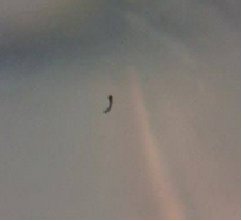
We received an interesting and highly specific question from a reader about ephydrid fly (shore fly) larvae, which are a type of maggot that live in natural hot springs. She wants to know if it is safe to sit in a hot springs that is “filled with ephyrdid fly maggots.” Psychologically, she doesn’t mind the presence of the larvae, and she is keen to enjoy the natural hot springs she comes across in nature, but she doesn’t want the larvae to “crawl up places they don’t belong.” She spells out this concern in more graphic detail, citing specific orifices, including a wound on her foot, and we’ll leave it to you to imagine some of the other openings she is concerned with. Are the maggots that live in hot springs dangerous, and will they crawl into places they don’t belong?
This is a reasonably straightforward question, but one that is made complicated by its high degree of specificity. As you might imagine, there isn’t exactly an abundance of information about this precise issue. Moreover, we don’t want to make statements that could in any way be construed, however indirectly, as medical advice. We did find out some information about the reader’s question, but we aren’t prepared to make blanket statements about whether it is or is not safe to enter a hot springs with ephydrid fly larvae.
We should begin by noting that there are a number of different factors that you should consider before entering a hot springs, and the presence or absence of ephydrid fly larvae probably shouldn’t be one’s main concern. One particularly well-known problem for hot springs users are red spider mites, which are tiny pests that cling to skin and then bite it in a fruitless attempt to lay eggs in the wound they create. The bites leave red, itchy sores, and while they will heal after a couple of weeks, you should avoid hot springs that are known to have red spider mites. You should also be aware of the water quality of a hot springs, which can be determined by assessing factors like its pH level (the alkaline side of the scale is better) and water flow (relatively stagnant water is more dangerous to soak in). More detailed information about these matters can be found in this article on geothermal water quality. It is specifically written with Idaho’s hot springs in mind, but it has broader applicability.
Assuming a hot springs checks out in all other ways, but it contains ephydrid fly maggots, is it safe to soak in it? Based on what we have read, the answer seems to be yes, as we have read nothing to suggest that the larval form of ephydrid fly are dangerous. There is an informative article about Animal Life in Hot Springs published by Yellowstone Association for Natural Science that focuses specifically on ephydrid flies, and this piece reports that the adults are non-biting, and that the larvae only feed on microbial cells that are found on the microbial mats on/in which they live. This makes them vegetarians, as they do not prey on other animals. So, it is hard to imagine how or why one of these maggots could cause harm to a human. More generally, we actually know of only one type of larva that in any sense “burrows” into humans, the screw worms, and these can only infect people with open wounds, where screw worm flies (screw worms are actually fly larvae) will lay their eggs. We mention this only to indicate that the fear of larvae forcing their way into the human body, a prospect that has actually been raised by a few readers in the past, is largely unfounded, unless you live in one of the regions of the world in which screw worms have not been eradicated.
This last topic brings us to the wound on our reader’s foot. Even if it likely won’t be affected by ephydrid fly larvae, it is wise to avoid soaking in water of any sort with a wound, as it is susceptible to a broad range of infections. One particularly horrifying infection is caused by acanthamoeba, the so-called “brain-eating amoeba” that is known to live in some hot springs. It often enters a body through the nasal passages, which is why you shouldn’t dunk your head in a hot springs, but they could also enter through an open wound. Once in your body, it can eventually spread to the brain, causing brain damage and almost certain death. The infection is rare, but precautionary measures are wise when entering water that could conceivably contain the amoeba, like hot springs. A hot springs pool that is known to contain acanthamoeba is sometimes marked, but this isn’t always the case.
To conclude, we think that it is likely safe, if other sources of danger are controlled for, to enter a hot springs with ephyrdid fly larvae, but this is based on limited information, and in any case it can’t be taken as any sort of medically valid advice. Overall, though, it seems like there are more pressing matters to attend to when evaluating a soak in a hot springs, and perhaps it is wise for our reader to focus more on these matters than on ephyrdid fly larvae, even though their presence has a certain visceral effect.
All About Worms is always free, always reader-supported. Your tips via CashApp, Venmo, or Paypal are appreciated! Receipts will come from ISIPP Publishing.
You might also find these guys interesting!





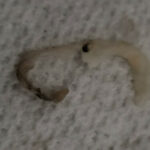
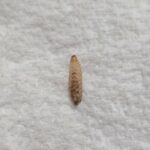
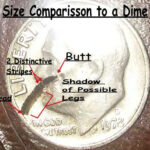
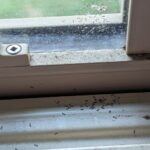
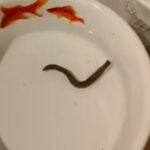
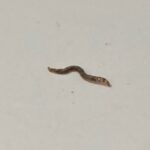
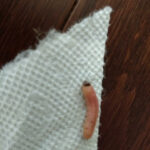


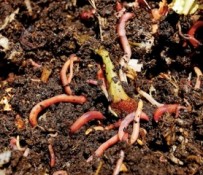



The bug that has earned the moniker “brain eating amoeba” is Naegleria fowleri.
While Acanthamoeba may infect eyes, brain and spinal cord, or create a widespread infection of various organs, Naegleria fowleri is dedicated to infecting brains through nasal passages, and is nearly inevitably fatal.
These bugs are common enough to make signage of little or no value.
The best prevention is to follow the advice offered above and refrain from dunking one’s head, and avoid entering hot springs altogether when sporting open wounds.